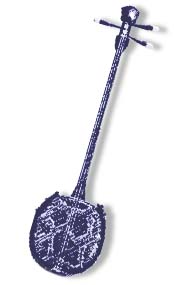
 |
|
| An Introduction to the mysteries of Okinawan Music and its tremendous history. Each of the various music styles that have blossomed throughout history in Okinawa has its own story woven into it. In this column we explore the threads of the mystery of this magnificent musical legacy. | |
| . | |
 |
- What is the origin of Ryukyuan musical scales? - What is the origin of Ryukyuan musical scales? The musical scales used in Ryukyuan music are played without the "Re" and "La" sounds and consist of "Do-Mi-Fa-Sol-Ti-Do". For example, there are other scales such as the Ritsu scale of the Kyushu region that have no "Mi" and "Ti" and use just the "Fa-Sol-La-Do-Re-Fa". The "Fa" sound takes the lead. While Kyushu is close to Okinawa, this is very different from the Okinawan version. Okinawa's also differs from the folk song scale and the five toned Miyako-bushi scale of mainland Japan. So where did it come from? There are two theories. Because the older ballads and songs are close to the Ritsu scale, it is thought that originally the tone system of Okinawa and mainland Japan were the same and that through time it has changed to what it is now. The other explanation says that the Ryukyuan scales are extraordinarily close to the Indonesian Perogu scale and appear similar to a wide range of scales used in other regions of Asia such as Polynesia, southeast Asia, southern China, and the Himalayas. From this view, the Ryukyuan tone scale is based on southern Asian music. There is a need for further research and it appears the mystery will not be solved for a while.
|
||||||||||||||||||||||||||||||||
| Photo : Okinawa Prefectural Museum, Hiroshi Shimabukuro | |||||||||||||||||||||||||||||||||